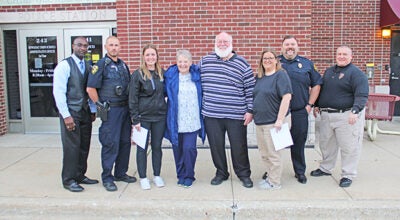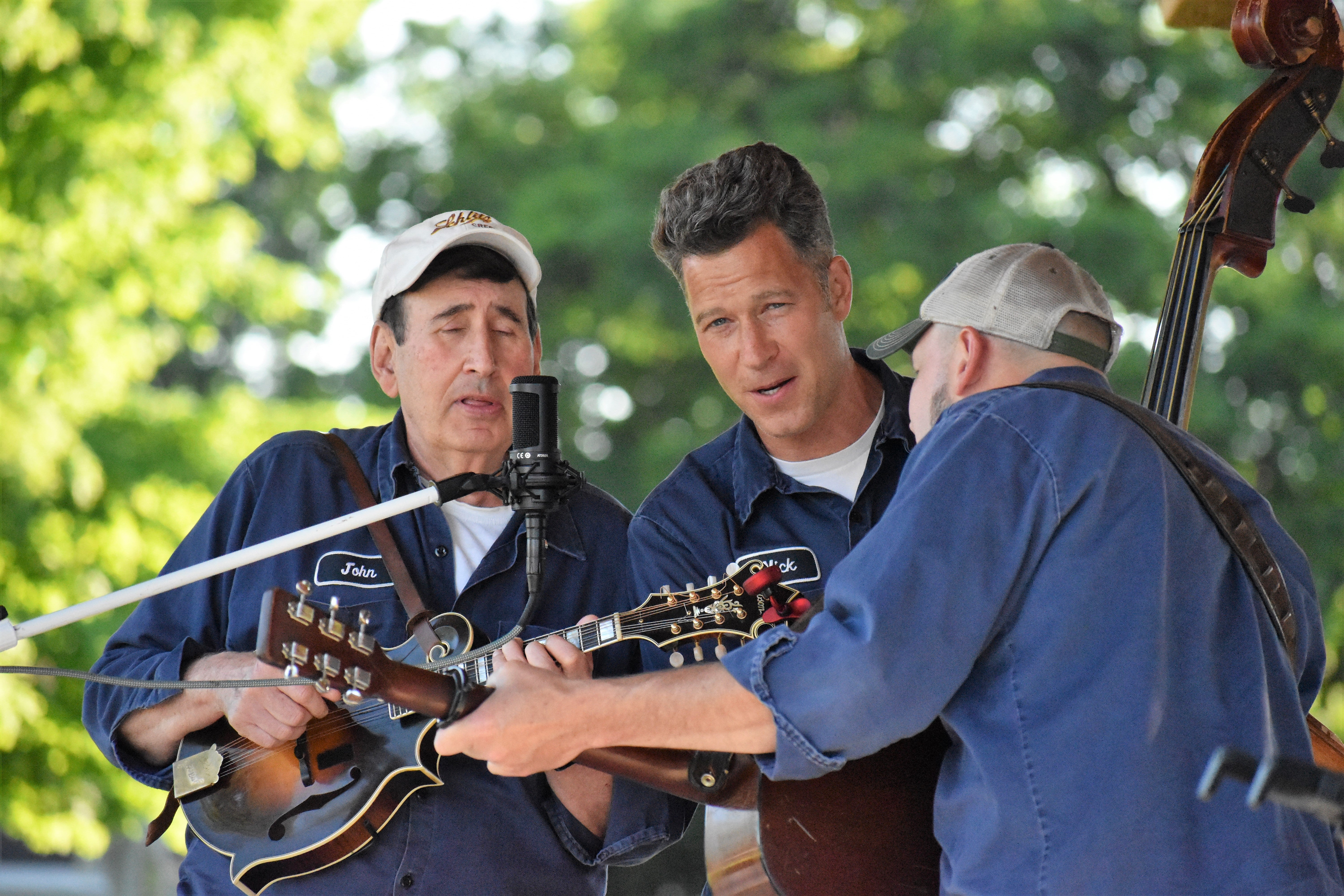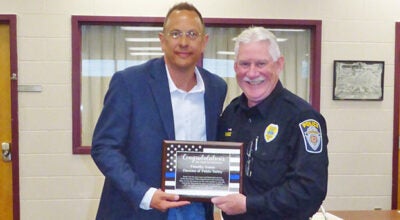New Orleans chef dishes on food fame
Published 8:36 pm Friday, May 13, 2011

Evan Ingram from August, one of John Besh’s six restaurants in New Orleans, and the chef serve shrimp Creole they made Friday morning at Dowagiac Middle School with four student assistants, Morgan Bonomo, twins Tristan and Connor Howard and Jewelianna Robison. (Daily Star photo/JOHN EBY)
Since Chef John Besh ventured out on his own in 2001 to start building his restaurant empire it doesn’t feel like he’s working because pursuing his passion is so much fun.
Besh likes entertaining, so owning a restaurant — or six in New Orleans and a seventh in San Antonio — is like having people over every night.
“I like to make people happy, and food will do that,” Besh told middle-schools in Dowagiac Friday.
“It takes a huge team to pull it off” — 650 employees.
He “does a lot of bouncing,” but spends the bulk of his time at August and its “refined French cooking” and La Provence, a rural farm with a small French restaurant attached.
Culinary artists also make good classroom motivational speakers because cooking requires everything — history to provide a platform from which to create new foods; science, since physics and chemistry are part of the mix; business skills; and math, because once you’re grounded in ratios, the proper proportions of ingredients, you can improvise away from the recipes that were Besh’s undoing in junior high in Louisiana.
Students ask Besh about Hurricane Katrina in 2005.
“We had two restaurants prior,” he said. “One, we lost the roof, but it didn’t flood like some parts of the city, and that’s where the big problems were. We had minor damage in the grand scheme of things, which allowed us to open up early. The city was closed for months and I thought sure I’d go out of business. Food talents are also a way of doing good things on earth. A couple of days after Hurricane Katrina we started feeding people out on the street who were without food, water and homes.”
“New Orleans had all these great chefs to emulate,” he said. “There were chefs on TV before there was even cable. Now I have a slew of restaurants and my own show, cooking the way I grew up to explain to the rest of the country how special New Orleans is — a taste of the bayou.” He says his hometown like Awleans.
Besh’s cardinal rule is cooking what’s in season — asparagus and morel mushrooms in Michigan — which was instilled in him by his German mentor.
Before becoming a chef, however, Besh detoured into the Marines for four years and with time in the Reserves, spent about eight years, including serving in the Gulf War.
Besh’s next move was to “marry the girl next door. We started kindergarten together and I finally wore my wife down. Her brother was my best friend until I married her. During the Gulf War she was my pen pal, writing actual letters before e-mail, if you can imagine that.
“I tell you this because the way I cook involves so much of my life. I wanted to cook, but that seemed kind of wimpy, so I became a Marine. After a while in the Marines I said to heck with that, I want to be a chef, which kind of led me around the world. I married the girl down the street and she and I lived in Europe together and traveled before settling down in New Orleans. We now have four boys, all about your age.”
“We eat rice with everything. Meals as a kid, it didn’t matter if you had potatoes, you still had to have rice, which you make following a ratio instead of a recipe.”
He seasons it with a “little salt,” which streams through his fingers like a pail of beach sand at Lake Michigan.
He simmers it to “barely boiling, like swamp water with bubbles coming up. Connor’s seasoning the shrimp with all these great spices. New Orleans is known for its spice — flavorful, but not spicy, food. Creole is really nothing more than a mixture of onion powder, garlic powder, a little bit of cayenne pepper and a little bit of celery salt and a touch of allspice, which comes from West Africa and throughout the Caribbean. A cool thing about food is how you can learn about people and where they come from. New Orleans’ culture has given birth to this great Creole cuisine,” of which Cajun “is a simple country cousin.”
“The cool thing about a live cooking demo is that it’s like smell-o-vision,” Besh says of the enticing aroma wafting into the hall which makes Deanna Horrell’s kitchen an easy find for visitors, like Supt. Mark Daniel.
Chopping celery reminds Besh of the first of nine “Iron Chef” episodes on Food Network.
Has he ever made food for Mardi Gras? “All the time,” he tells a student. “It’s really more or less a family event” where jambalaya, gumbo, red beans and rice and fried chicken are consumed while floats pass by.
“We bring big pots of it out to the parade route,” Besh said, “and everybody shares with each other. We celebrate everything with food.”
Besh passes around what looks like a celery stalk, but turns out to be lemongrass, introduced to Creole cooking by the wives of Vietnamese shrimpers.
“We have a farm where all these tomatoes grow,” Besh explained. “We can them in a big pot of olive oil and add some crushed garlic. We cook them for five minutes so they taste really, really fresh and sweet. This big mill adds basil, salt, pepper. I use them in all of our cooking. Just because it’s in a can doesn’t mean you don’t use it.”
He urges students to “pursue your passions. What is it you enjoy doing? Find what that is and go pursue it.”






